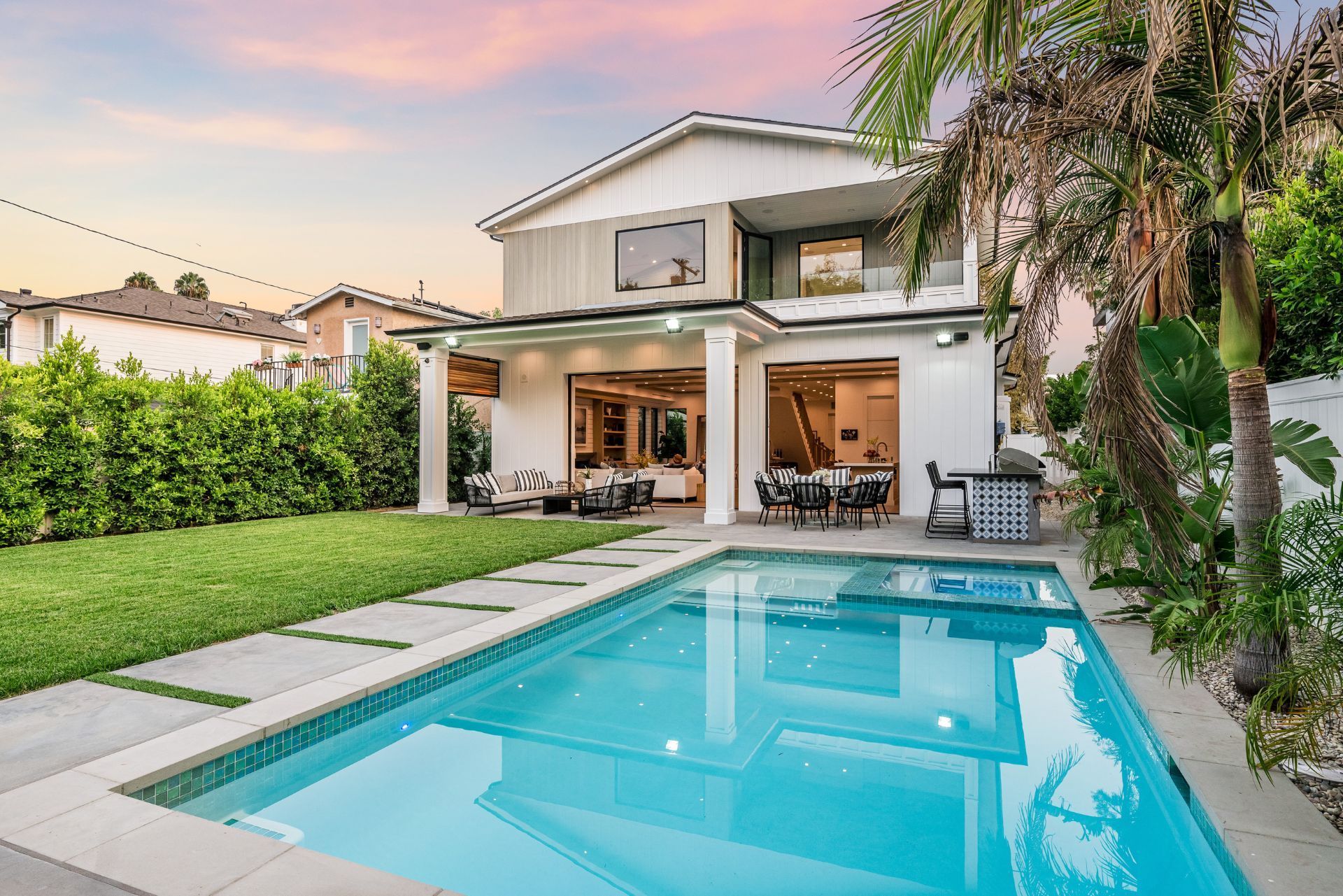Top 3 Recommended Policies
Index
Contact Us
Homeownership in Texas is a significant investment, and protecting that investment is crucial. For homeowners with properties valued above the average market rate,
high value home insurance is essential. This specialized insurance offers tailored coverage to meet the unique needs of high-end homes. Understanding the intricacies of high value home insurance can help homeowners make informed decisions about their coverage options.
What is High Value Home Insurance?
High value home insurance is designed for properties that are worth significantly more than the average home in a given area. Typically, this type of insurance is applicable to homes valued at $750,000 or more, though this threshold can vary by insurer. Standard homeowners insurance may not provide adequate coverage for high-value properties, as it often has limits that do not reflect the true replacement cost of luxury homes. This discrepancy can leave homeowners vulnerable to substantial financial losses, especially in the event of a catastrophic incident.
Key Features of High Value Home Insurance
High value home insurance policies often come with several features that set them apart from standard policies. These may include higher coverage limits, specialized coverage options for unique home features, and more comprehensive liability protection. Additionally, many high value policies offer coverage for personal property, including art, jewelry, and collectibles, which may not be fully covered under standard policies. For instance, some insurers provide coverage for items that are not only valuable but also irreplaceable, such as family heirlooms or bespoke furnishings, ensuring that homeowners are fully protected against loss.
Why Choose High Value Home Insurance?
Choosing high value home insurance provides peace of mind. Homes in this category often have unique architectural designs, high-end materials, and custom features that require specialized coverage. In the event of a disaster, such as a fire or natural disaster, having a policy that accurately reflects the home's value ensures that homeowners can rebuild or repair without incurring significant out-of-pocket expenses. Furthermore, high value home insurance can also include additional services, such as risk assessment consultations and access to a network of vetted contractors, which can streamline the claims process and provide homeowners with expert guidance during stressful times. This comprehensive approach not only safeguards the physical structure of the home but also enhances the overall living experience by ensuring that every aspect of the property is adequately protected.

Understanding Coverage Options
When selecting high value home insurance, it is essential to understand the various coverage options available. Policies can be customized to fit individual needs, ensuring that homeowners are adequately protected against a range of risks. This customization allows for a tailored approach, taking into account the unique features and assets of high value homes, which often include expansive properties, luxury amenities, and specialized construction materials.
Dwelling Coverage
This is the core component of any home insurance policy. Dwelling coverage protects the structure of the home itself, including the roof, walls, and foundation. For high value homes, it is crucial to have a policy that covers the full replacement cost, which may be significantly higher than the market value. Homeowners should also be aware of the potential need for additional coverage for unique architectural elements or custom-built features that may not be easily replaceable. Regular assessments of the home’s value and updates to the policy can help ensure that coverage remains adequate over time, especially as property values fluctuate.
Personal Property Coverage
High value homes often contain valuable personal belongings, such as fine art, jewelry, and antiques. Personal property coverage ensures that these items are protected against theft, loss, or damage. Homeowners should consider scheduling high-value items separately to ensure they have adequate coverage. This process involves providing detailed appraisals and documentation for each item, which can help streamline claims in the event of a loss. Additionally, homeowners might want to explore options for worldwide coverage, as many high-value items can be at risk when traveling or stored outside the home.
Liability Protection
Liability protection is another critical aspect of high value home insurance. This coverage protects homeowners in the event that someone is injured on their property or if they cause damage to someone else's property. Given the potential for higher claims in high value homes, having sufficient liability coverage is essential. Homeowners should also consider umbrella liability policies, which provide an extra layer of protection beyond standard limits. This can be particularly important for those who frequently host guests or have features like swimming pools or expansive outdoor spaces that could pose additional risks. Understanding the nuances of liability coverage can help homeowners mitigate financial exposure and ensure peace of mind while enjoying their luxurious living spaces.
Factors Influencing Premiums
The cost of high value home insurance can vary significantly based on several factors. Understanding these factors can help homeowners anticipate their insurance costs and make informed decisions about their coverage.
Location
The location of a home plays a significant role in determining insurance premiums. Homes in areas prone to natural disasters, such as hurricanes, floods, or wildfires, may have higher premiums due to the increased risk. Additionally, homes in urban areas may face different risk assessments compared to those in rural settings. For instance, urban homes might be at a higher risk for theft and vandalism, which can further elevate insurance costs. On the other hand, rural homes, while potentially safer from certain urban risks, may be more susceptible to issues like flooding if they are near bodies of water or in low-lying areas.
Home Features
Unique features of a home can also impact insurance costs. High-end materials, custom architectural designs, and luxury amenities can increase the replacement cost of a home. Insurers will assess these features when determining premiums, as they may require more extensive coverage. For example, a home with a swimming pool or a home theater may require additional liability coverage, which can contribute to higher premiums. Furthermore, homes equipped with advanced security systems or fire-resistant materials might qualify for discounts, reflecting the insurer's reduced risk in covering such properties.
Claims History
A homeowner's claims history can influence insurance premiums. If a homeowner has a history of filing multiple claims, insurers may view them as a higher risk, resulting in increased premiums. Conversely, a clean claims history may lead to lower rates. It's important to note that not all claims are treated equally; for instance, a single major claim for significant damage may have a more substantial impact on premiums than several smaller claims. Homeowners should also be aware that the time frame in which claims are made can affect how long they influence premium rates, with older claims typically having less weight over time.
Common Exclusions in High Value Home Insurance
While high value home insurance offers extensive coverage, there are common exclusions that homeowners should be aware of. Understanding these exclusions can help homeowners avoid surprises when filing a claim.
Natural Disasters
Many high value home insurance policies exclude coverage for certain natural disasters, such as floods or earthquakes. Homeowners in areas prone to these events may need to purchase separate policies or endorsements to ensure adequate protection. For instance, flood insurance is often provided through the National Flood Insurance Program (NFIP), which can be crucial for those living in flood-prone regions. Additionally, earthquake insurance can be a wise investment in seismic zones, as the damage from such events can be catastrophic and costly to repair.
Maintenance Issues
Insurance policies typically do not cover damage resulting from neglect or lack of maintenance. Homeowners are responsible for maintaining their properties, and failure to do so may result in denied claims. Regular maintenance is essential to prevent issues that could lead to significant damage. This includes routine inspections of roofs, plumbing, and electrical systems, as well as seasonal tasks like gutter cleaning and landscaping upkeep. By staying proactive, homeowners can not only protect their investments but also potentially lower their insurance premiums through reduced risk.
Wear and Tear
Normal wear and tear is not covered under high value home insurance policies. Homeowners should be aware that insurance is designed to protect against sudden and accidental damage, not gradual deterioration of their property. This means that issues like fading paint, worn-out carpets, or aging appliances will not be eligible for coverage. Homeowners should budget for these inevitable expenses as part of their overall home maintenance plan, ensuring that their property remains in excellent condition and retains its value over time. Investing in high-quality materials and making timely upgrades can also mitigate the effects of wear and tear, ultimately enhancing the longevity of the home.
How to Choose the Right Policy
Choosing the right high value home insurance policy requires careful consideration of individual needs and circumstances. Here are some tips to help homeowners make informed decisions.
Assess Your Coverage Needs
Before selecting a policy, homeowners should assess their coverage needs. This includes evaluating the value of the home, the cost of replacing unique features, and the value of personal belongings. A comprehensive inventory can help ensure that all valuable items are adequately covered. Additionally, homeowners should consider the potential risks specific to their geographic location, such as natural disasters or high crime rates, which may necessitate additional coverage options. For instance, homes in flood-prone areas may benefit from specialized flood insurance, while those in regions prone to wildfires might need to look into enhanced fire protection coverage.
Compare Multiple Insurers
Not all insurance companies offer the same coverage options or premiums. Homeowners should compare policies from multiple insurers to find the best fit for their needs. It is essential to read the fine print and understand what each policy covers and excludes. Furthermore, homeowners should take note of the claims process and customer service reputation of each insurer, as these factors can significantly impact the experience during a claim. Online reviews, testimonials, and ratings from independent agencies can provide insights into how well an insurer handles claims and customer inquiries, which is crucial for peace of mind when selecting a policy.
Consult with an Insurance Agent
Working with an experienced insurance agent can provide valuable insights into high value home insurance. Agents can help homeowners navigate the complexities of different policies, ensuring they select the right coverage for their unique situations. They can also offer advice on bundling policies, which may lead to discounts and better overall value. Additionally, an agent can assist in understanding the nuances of endorsements and riders that can enhance a standard policy, such as coverage for art collections or high-end jewelry, ensuring that all aspects of a homeowner's lifestyle are protected. This personalized approach can make a significant difference in tailoring a policy that truly meets the homeowner's needs.

Tips for Lowering Premiums
While high value home insurance can be costly, there are several strategies homeowners can employ to lower their premiums without sacrificing coverage.
Increase Deductibles
One effective way to reduce premiums is to increase deductibles. A higher deductible means that homeowners will pay more out of pocket in the event of a claim, but it can significantly lower monthly premiums. Homeowners should weigh the potential savings against their ability to cover a higher deductible if necessary. It's important to assess personal financial situations and consider factors like emergency funds before making this decision, as unexpected repairs can arise at any time.
Bundle Policies
Many insurance companies offer discounts for bundling multiple policies, such as home and auto insurance. Homeowners should inquire about bundling options, as it can lead to substantial savings on premiums. Additionally, bundling can simplify the management of insurance policies, allowing homeowners to deal with one provider for all their needs. This not only streamlines communication but can also enhance customer loyalty benefits, such as accident forgiveness or loyalty discounts over time.
Implement Home Security Measures
Installing security features, such as alarm systems, surveillance cameras, and smart home technology, can reduce the risk of theft and damage. Many insurers offer discounts for homes equipped with advanced security systems, making it a worthwhile investment for homeowners. Furthermore, these security enhancements not only provide peace of mind but can also increase the overall value of the home. Homeowners might consider additional measures like motion-sensor lighting, reinforced doors, and window locks, which can further deter potential intruders and contribute to a safer living environment.
Maintain a Good Credit Score
Another crucial factor that can influence home insurance premiums is the homeowner's credit score. Insurers often use credit scores to assess risk, and a higher score can lead to lower premiums. Homeowners should regularly check their credit reports for inaccuracies and take steps to improve their scores, such as paying bills on time and reducing debt. By maintaining a good credit score, homeowners not only benefit from lower insurance costs but also enhance their overall financial health, which can be advantageous when seeking loans or mortgages in the future.
Regularly Review Coverage
Homeowners should make it a habit to review their insurance coverage regularly, especially after major life changes such as renovations, new purchases, or changes in family status. Adjusting coverage to reflect the current value of the home and its contents can prevent overpaying for insurance. Additionally, comparing quotes from different insurers periodically can uncover better rates or more suitable coverage options, ensuring that homeowners are not missing out on potential savings. This proactive approach can lead to significant reductions in premiums while still providing adequate protection for their assets.
Filing a Claim: What to Expect
Filing a claim can be a daunting process, but understanding what to expect can help homeowners navigate it more smoothly. Here’s a step-by-step guide to filing a claim on high value home insurance.
Document the Damage
The first step in filing a claim is to document the damage thoroughly. Homeowners should take photographs and create a detailed inventory of damaged items. This documentation will be crucial when working with the insurance company.
Contact Your Insurer
After documenting the damage, homeowners should contact their insurance company to report the claim. It’s essential to provide all necessary information and documentation to facilitate the claims process. Insurers may assign an adjuster to assess the damage and determine the payout.
Follow Up on the Claim
Once a claim is filed, homeowners should follow up regularly to check on its status. Communication with the insurance company is key to ensuring that the claim is processed efficiently. If any additional information is needed, homeowners should be prompt in providing it.
Conclusion
High value home insurance is an essential aspect of protecting significant investments in Texas. By understanding the unique features, coverage options, and factors influencing premiums, homeowners can make informed decisions about their insurance needs. With the right policy in place, homeowners can enjoy peace of mind knowing that their valuable properties are well protected.
Ultimately, taking the time to assess coverage needs, compare policies, and consult with experts can lead to better protection and potential savings. High value home insurance is not just about safeguarding a house; it’s about protecting a home and all the memories it holds.






